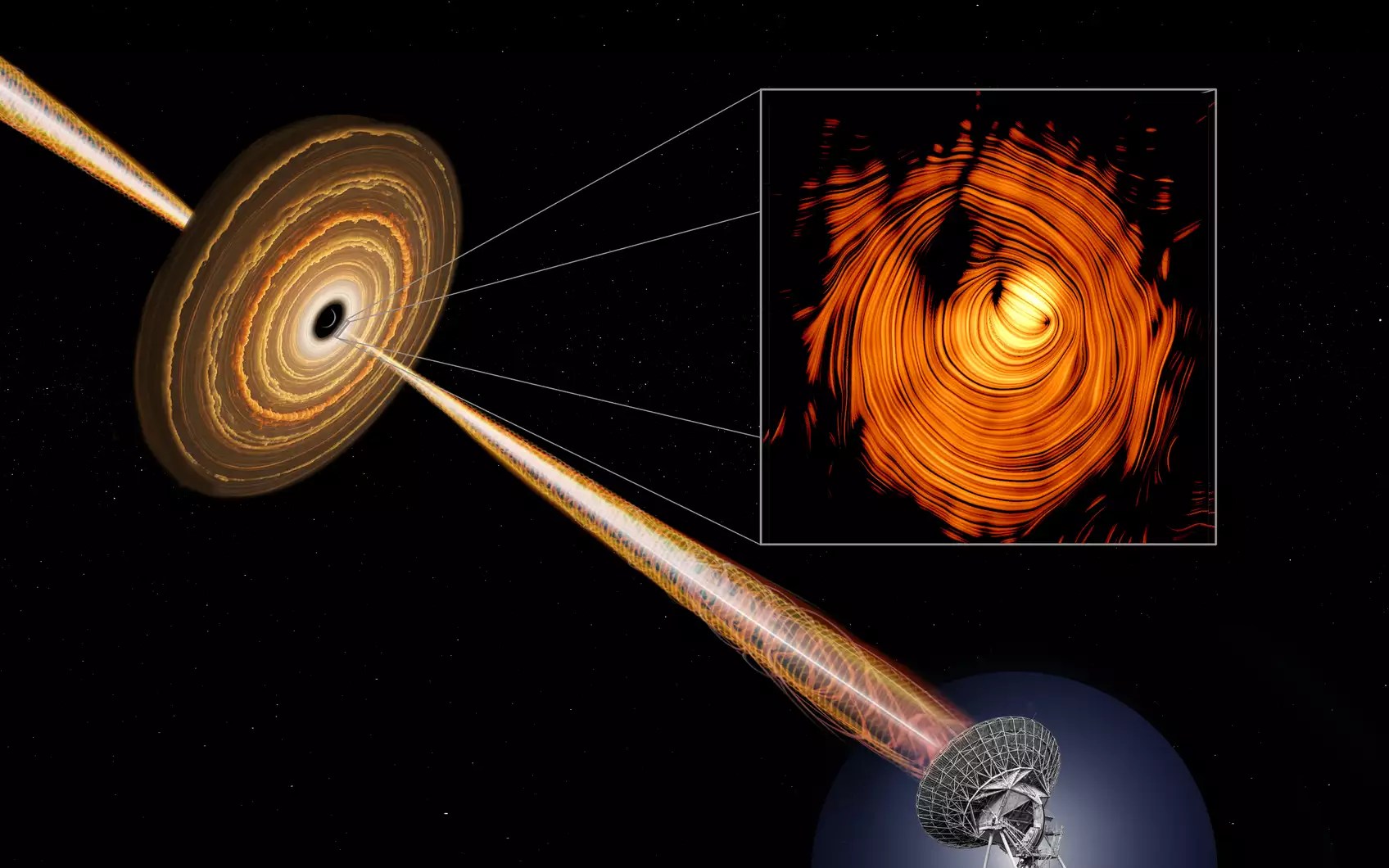Billions of light-years away, a cosmic jet bearing a striking resemblance to the eye of Sauron from the Lord of the Rings is swirling at the heart of a very active galaxy. The unique cosmic body was spotted thanks to 15 years of observations using the Earth-based Very Long Baseline Ar-ray and is helping scientists better understand the anatomy of cosmic jets,powerful beams of plasma and energy that come from black holes, neutron stars, and other celestial bodies. The unique attributes of this “Eye of Sauron” cosmic jet is detailed in a study published August 12 in the journal Astronomy & Astrophysics.
“When we reconstructed the image, it looked absolutely stunning,” Yuri Kovalev, study co-author and astrophysicist at the Max Planck Institute for Radio Astronomy, said in a statement. “We have never seen anything quite like it—a near-perfect toroidal [doughnut shaped] magnetic field with a jet, pointing straight at us.”
The villanesque cosmic jet is spewing out of a blazar called PKS 1424+240. Powered by a supermassive black hole, blazars are a large type of active galaxy nucleus that belong to a class of galaxies called active galactic nuclei. Blazars are a ventral hub of power and light within these galaxies that aren’t powered by stars. A blazar’s black hole launches a jet of plasma that moves at roughly the speed of light and blazars.

As far as blazars go, PKS 1424+240 has long puzzled astronomers. It is the brightest known blazar that emits neutrinos, or tiny subatomic particles that are so difficult to detect they are nicknamed “ghost particles.” High energy gamma rays also radiate out from PKS 1424+240, making this unique blazar appear to glow. Even with all of these energetic gamma rays and neutrinos, the cosmic jet appeared to move much more slowly than expected. Only the fastest celestial jets were believed to power high-energy emissions like this, and not PKS 1424+240’s glacial pace.
Using the Very Long Baseline Ar-ray, an array of ten antennas positioned across the continental United States and in Hawaii and St Croix, researchers stitched together the incredible image of the jet coming out of the blazar, which looks unquestionably Lord of the Rings-esque. PKS 1424+240 and its jet are almost exactly aligned with the Earth. This amplifies the high-energy emissions in the jet when astronomers look at it.
“This alignment causes a boost in brightness by a factor of 30 or more,” co-author and astronomer Jack Livingston added. “At the same time, the jet appears to move slowly due to projection effects—a classic optical illusion.”
The rare opportunity to look at the blazar head-on allowed the team to peer directly into the heart of its stunning jet. Using polarized radio signals, the team mapped out the jet’s magnetic field and structure. The magnetic field might be shaped like a spiral (called helical) or doughnut shaped (called toroidal). The magnetic field’s structure likely plays a major role in how the plasma flows out of a blazar’s cosmic jet.
[ Related: Astronomers now know how supermassive black holes blast us with energy. ]
The discovery is part of the MOJAVE program, a decades-long effort to monitor jets in active galaxies. To monitor these jets, scientists use a technique called Very Long Baseline Interferometry (VLBI). VLBI connects radio telescopes across the globe to form a giant virtual telescope roughly the size of the Earth. Connecting all of these radio telescopes provides the highest resolution available in astronomy, giving us the fine details of distant cosmic jets.
“When we started MOJAVE, the idea of one day directly connecting distant black hole jets to cosmic neutrinos felt like science fiction,” said MOJAVE co-founder Anton Zensus “Today, our observations are making it real.”






